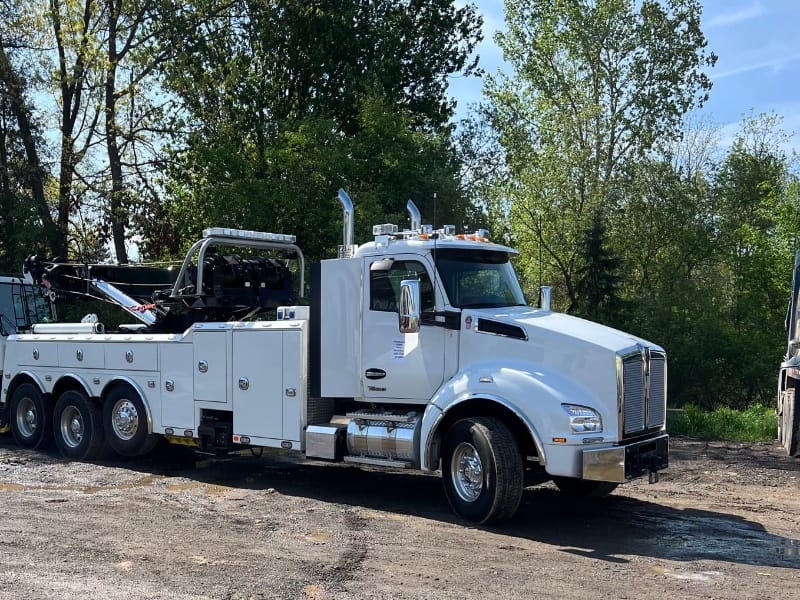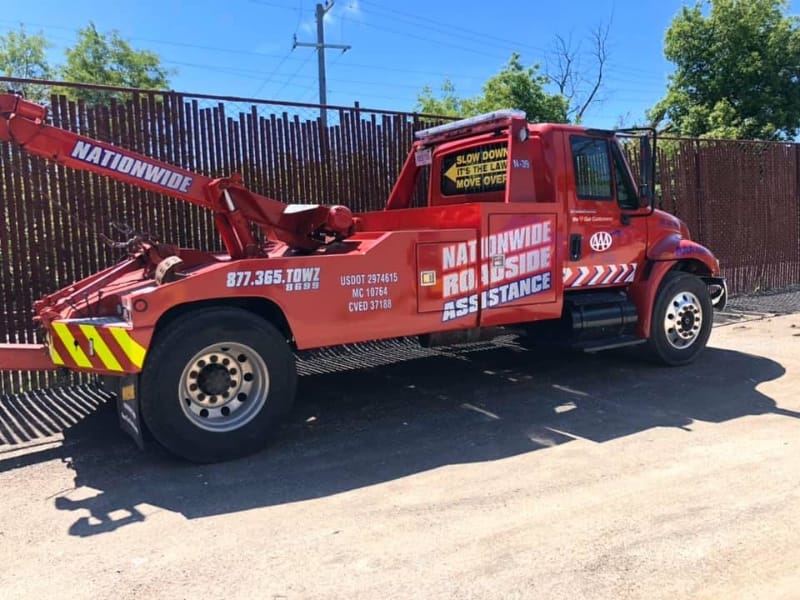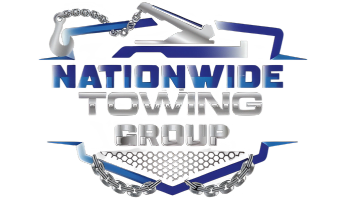Pulling the Right Strings
Winching is a critical process in heavy towing. When we talk about pulling vehicles out of tough spots, whether they’re stuck in mud, snow, or even a ditch, winching is the method that saves the day. It involves using a powerful motorized cable to pull a vehicle from a difficult position to a more stable one. Winching isn’t just about brute strength. It’s about ensuring the vehicle and surroundings remain undamaged. Let’s have a look at the winching scenarios our Ann Arbor heavy towing teams encounter on the road.

The Basics
A winch is essentially a drum powered by a motor and powered by a strong steel cable or synthetic rope wrapped around it. The motor generates the force to pull heavy vehicles while the cable attaches to a secure anchor point, usually on the disabled vehicle or a nearby stable object. The key to winching lies in controlling both the tension on the cable and the angle of the pull, which prevents further damage to the vehicle and avoids dangerous situations.
When is Winching Needed?
Winching is necessary when a vehicle is immobilized in tough terrains like:
- Muddy ditches
- Steep inclines
- Snowbanks or waterlogged areas
The Winching Process in Heavy Towing
- Step one is to assess the situation. We analyze the vehicle’s position, its weight, and the surrounding area. Is the ground stable enough to support our equipment? Where’s the best angle to pull from? After evaluating the scenario, the heavy towing truck is positioned for optimal leverage.
- Step two is setting up the winch. The cable is attached to a recovery point on the stuck vehicle, such as a tow hook or frame. We ensure that this attachment point is strong enough to bear the load. Once everything is in place, the winch slowly pulls the vehicle out.
- Step three involves constant monitoring. We adjust the tension as needed and ensure the pull is even. Jerky movements or misaligned angles can cause further damage or even break the cable. Our operators carefully control the pace, making sure each inch is as safe as the last.
Equipment Used
Winching is only as good as the equipment used. The typical tools include:
- A heavy-duty winch (capable of pulling several tons)
- Heavy-duty cables or synthetic ropes
- Pulley blocks for increasing pulling power
- Anchoring straps to secure the vehicle
This gear is essential for our Ann Arbor heavy towing operators, as it allows for flexibility and strength when dealing with challenging recovery operations.
Why Expertise Matters
Improper winching can be dangerous. It’s not just about hooking up the cable and pulling—it’s about understanding the forces at play. Misjudging the vehicle’s weight, the ground’s stability, or the right angle can lead to accidents, equipment damage, or injuries. Experienced heavy towing teams understand the physics involved, from the force needed to the exact angles to avoid unnecessary stress on the vehicle and winching system.
Safety Precautions
Safety is always the priority during any of our Ann Arbor heavy towing operations, and winching is no exception. Before engaging the winch, we make sure the area is clear. Onlookers need to keep a safe distance, as winch cables are under tremendous pressure. If one snaps, it can whip back with serious force. Proper use of heavy-duty gloves, clear communication, and visual equipment inspections are critical parts of the safety checklist.

Nationwide Towing & Heavy Duty Semi Truck Wrecker: Your Ann Arbor Heavy Towing Experts
If you ever find yourself stuck in a situation that a standard tow truck can’t handle, calling in Ann Arbor heavy towing for a winching recovery is the safest choice. Winching is designed for the toughest, heaviest jobs, so it’s crucial to rely on trained professionals to get the job done right.
At Nationwide Towing & Heavy Duty Semi Truck Wrecker, we specialize in Ann Arbor heavy towing and winching services. Whether it’s a heavy truck off the road or equipment stuck in a ditch, our expert operators handle even the toughest jobs with precision and safety. Let us help you get back on the road quickly and efficiently with our Ann Arbor heavy towing services.
